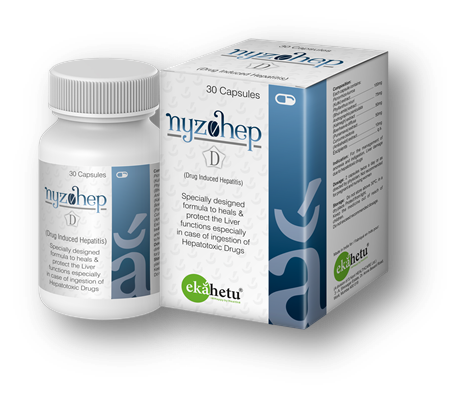Picorrhiza kurroaP. kurroa has been commonly used and well investigated for the treatment of jaundice. The plant has also been shown to be hepatoprotective in various animal models of hepatotoxicity like carbon tetrachloride, d-galactosamine, paracetamol, and thioacetamide. The herb itself, due solely to the kutkin molecules, appears to be potently hepatoprotective (protective of the liver) when ingested prior to or taken after exposure to a toxin. The protective effects seem to extend to all tested toxins or stressors that are known to alter liver function, and appear to also extend to states of intrinsic liver dysfunction (viral hepatitis and NAFLD from a high fat diet).
Boerhaavia diffusaThe roots of B. diffusa, commonly known as ‘Punarnava’, are used by a large number of tribes in India for the treatment of various hepatic disorders. The anti-hepatotoxic activity of B. diffusa could be due to the presence of flavonoids, which have anti-hepatotoxic properties. In one of the animal model study indicates that the prior administration of B. diffusa at 150 mg/kg body weight/day for 45 days prevents the isoproterenol induced hepatitis in rats. In the present study, the prior treatment with B. diffusa significantly (P<0.05) decreased all these ISPH – induced alterations in the activities of antioxidant enzymes, marker enzymes and maintained the rats at a near normal status. The overall hepatoprotective effect of B. diffusa is probably related to a counteraction of free radicals by its antioxidant property, or by its membrane stabilizing action.
Phyllanthus niruriP. amarus is a medicinal herb used in traditional Indian medicine for liver disorders. Several researches also show that it acts primarily in the liver, Standardize mixture of lignans (slPA) isolated from P. amarus and pre-treatment of slPA exhibit significant liver protection in dose dependant manner. In-silico molecular docking studies also suggests that lignans are preferentially more active due to strong binding affinity against pro-inflammatory cytokines; IL-1β, IL-6, and TNF-α. The electronic parameters of lignans for bioavailability, drug likeness and toxicity were within the acceptable limit. In-vivo and in-silico results suggest that pre-treatment of slPA exhibit potent hepatoprotection against GalN/LPS-induced hepatitis in mice and the liver protective effects due to the inhibition of inflammatory mediators.
Curcuma zedoariaC. zedoaria, with multiple ingredients, has been identified as having anti-inflammatory, anti-oxidative stress and anticancer properties. C. zedoaria shows active antioxidant enzymes like catalase, guaiacol peroxidase, glutathione peroxidase and superoxide dismutase and has great importance in therapeutic agent in preventing or slowing down the progressive ageing and age associated oxidative stress related degenerative diseases.
Andrographis paniculataOral administration of A. paniculata offered a significant dose dependent protection against paracetamol induced hepatotoxicity. Administration of the A. paniculata extract after paracetamol insult restored the levels of serum marker enzymes such as serum glutamate pyruvate transaminase (GPT), serum glutamate oxaloacetate transaminase (GOT), alkaline phosphatase (ALP), and bilirubin in peripheral blood serum to control (untreated) levels. Thus the present study revealed that the extracts of A. paniculata or S. chirayita offered protection against hepatotoxicity induced by paracetamol.

